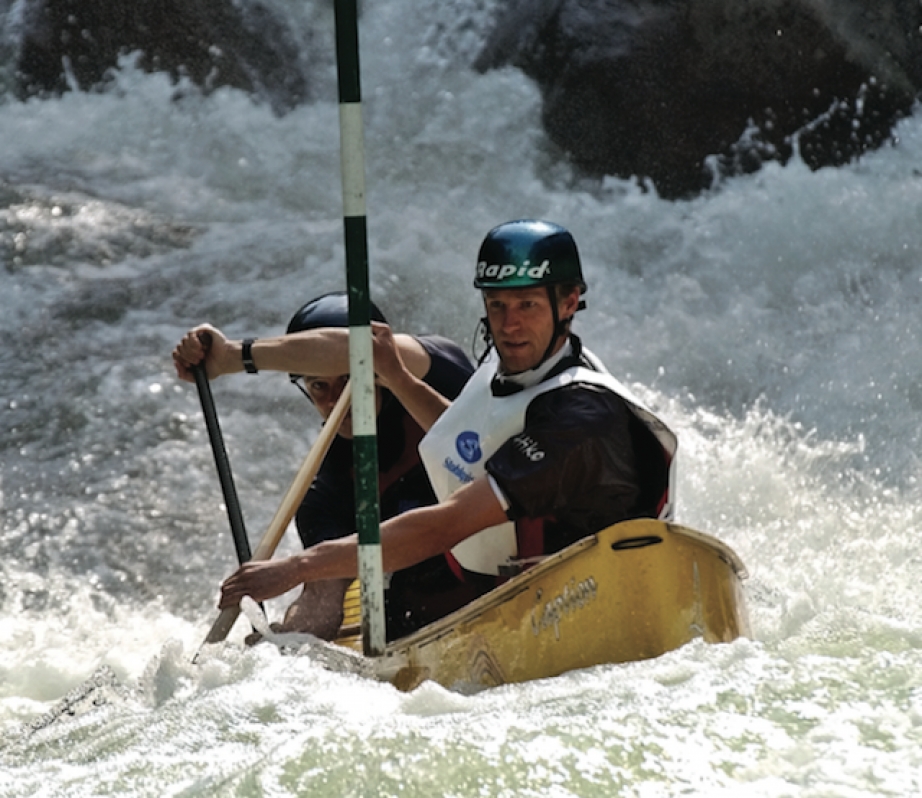Have you ever heard that old pearl of canoe wisdom look where you want to go and the boat will follow? I’ll admit I paddled to this tune for some time. However, more recently I have discovered that this statement doesn’t quite point in the right direction when learning how to use your body to effectively turn your canoe.
The reality is that when we look where we want to go our heads turn and there is a tendency for our shoulders to follow. It is the movement of your shoulders, rather than your head, that is the foundation for all turning strokes.
Slalom paddlers are experts at this as they are constantly changing direction as they catch eddies and zigzag their way down the course. They have developed an effective way to use shoulder rotation and bow and cross-bow strokes to quickly and dramatically turn the boat with one stroke before scurrying around the next obstacle.
To understand what they are doing, I imagine that I have a laser pointer on each of my shoulders. When I want to change direction I plant a draw or cross-draw or ideally a Duffek or cross-bow Duffek with both pointers shining toward my intended path. By doing this, especially when turning, I wind up my torso. The magic is that my knees and thus the boat will follow toward my paddle.
Use your body to effectively turn your canoe
The next time you’re in front of a computer on a spinning office chair, point both shoulders at the computer screen and then plant your feet firmly on the floor. Twist both your shoulders so that they are either pointing 90 degrees to the left or right of your computer screen, then lift your feet and snap your shoulders back towards the computer. You should notice two things happening: your shoulders are moving toward the screen and; your knees are moving toward the wall that you were just looking at.
Now try it again, but this time turn only your head. Not much happens. Without winding up your torso you will reduce the effect of the boat rotating toward your paddle.
Pointing your shoulders in the direction of travel also creates the room you need for one-stroke bow draws or cross-draws. Torso rotation allows you to plant your strokes further from the bow. Without rotating your shoulders you will invari- ably run out of room for your paddle—the paddle will slap into the side of the canoe before the turn is completed. Therefore, you’ll be forced to take the time to do a number of turning strokes with challenging recovery strokes.
The third advantage to leading with your shoulders is that you are forced to engage the larger and more powerful muscles of your torso. By doing so, you avoid the mistake of using your smaller and weaker arm muscles. Your turning strokes will be much stronger and you will reduce the likelihood of injury.
Trade your office chair for your boat and try catching eddies or zig-zagging your way around some rocks by twisting your torso so both shoulders are pointed toward your destination. Plant your draw or cross-draw and allow your knees to drive the boat toward your paddle. With a bit of practice you and your canoe will be dancing to a brand new tune.
Andy Walker is a five-time winner at the ACA Open Canoe Slalom National Championships.
This article first appeared in the Summer 2008 issue of Rapid Magazine.





